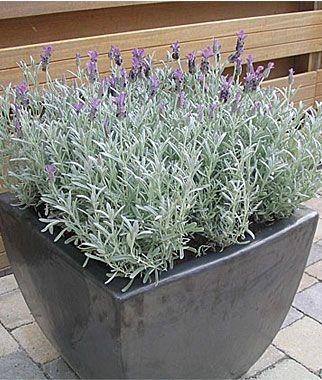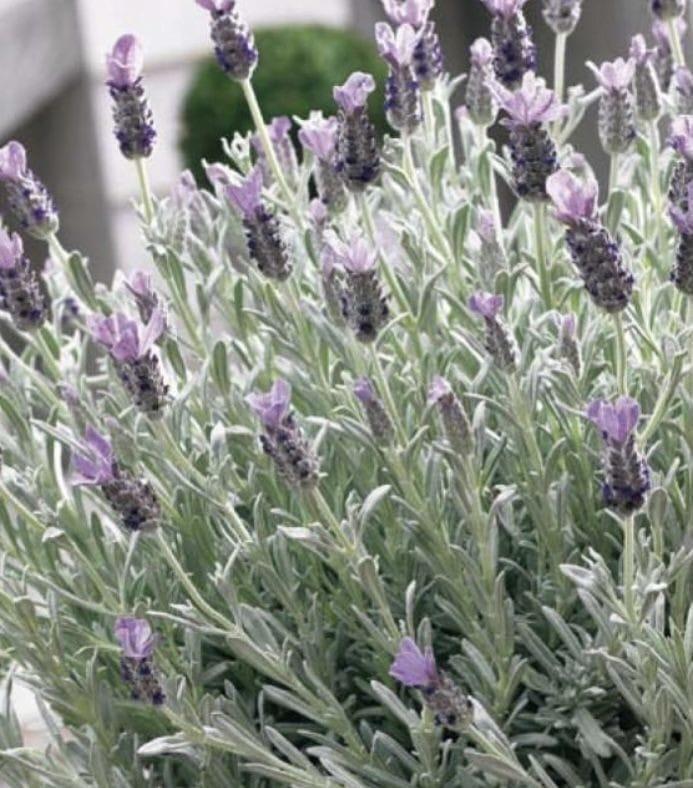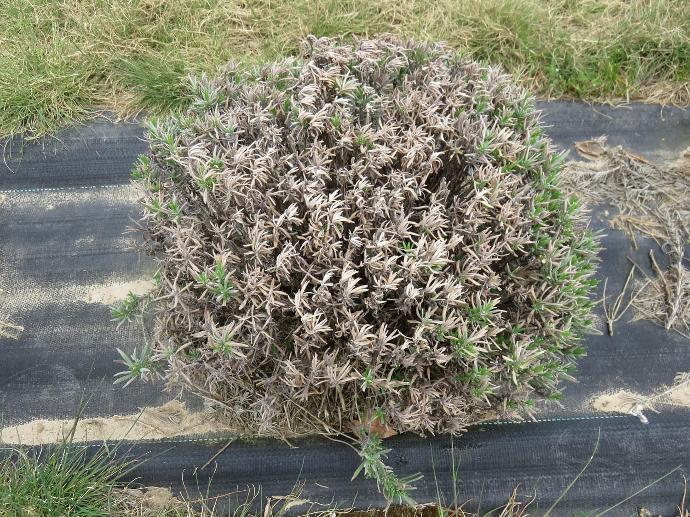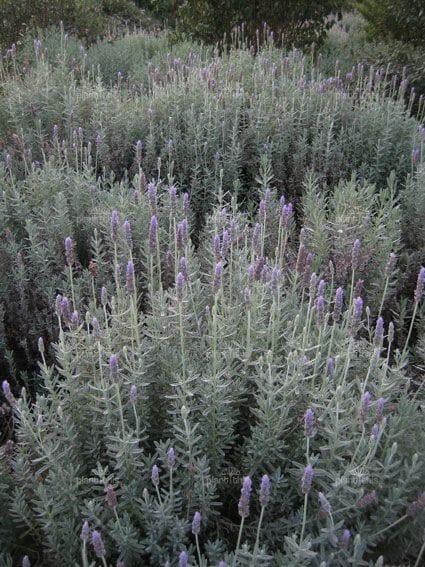Silver lavender Plant
Silver Lavender, a variety of Lavandula, may have care requirements similar to other lavender plants. Plant in well-draining soil with full sun exposure. Water consistently, and prune after flowering to maintain a compact shape. Harvest lavender for various uses.

Habit
Perennial
Height
30-60 cm
Growth
Moderate
Soil
Well-drained, sandy
Shade
Full Sun
Moisture
Moist
Edible
No
Medicinal
Yes
Origin
Mediterranean
Climatic Condition
Mediterranean, Warm
Temperature (°)
15-30°C
Humidity (%)
50-60%
Potting media
Loamy, peat
Fertilizers
Organic, balanced NPK
Watering
Low
Plant Weight
100-150 g
Flowering Time
Spring, Summer
Soil Ph level
6.0 - 7.5
Water Ph level
6.0 - 7.5
Soil EC
1-2 dS/m
Yield Per Plant
Ornamental, aromatic
NPK ratio
10:10:10
life Span
Perennial
Health Benefits
Aromatic, anti-inflammatory
Suggested Grow Media or Potting Mix ?
50% loam, 25% compost, 25% sand
Suggested Fertigation/Fertilizers
Fertilize every 4 weeks with a balanced fertilizer.
Common Diseases and Remedies
Botrytis , powdery mildew.
the young shoots turn yellow and wilt from about May onwards. Later the branches die back, and the disease spreads throughout the plant which ultimately dies.
Spray neem oil
HEALTH BENEFITS
· Known for its calming effects, used to reduce anxiety and stress.
Has antimicrobial and anti-inflammatory properties.
What Is An Silver lavender plant ?
Silver Mist Lavender is a dense multi-stemmed evergreen shrub with a mounded form. It lends an extremely fine and delicate texture to the landscape composition which should be used to full effect. This is a relatively low maintenance shrub, and can be pruned at anytime.

What Are The Different Types Of Silver lavender Plants?
Lavandula angustifolia 'Hidcote': This variety has silvery-gray foliage and deep purple flowers, known for its strong fragrance and compact growth habit.
Lavandula angustifolia 'Munstead': Another variety with silver-gray foliage, 'Munstead' has lavender-blue flowers and is known for its hardiness and aromatic properties.
Lavandula stoechas 'Silver Anouk': While not a true lavender (it's a French lavender), 'Silver Anouk' has silvery-gray foliage and purple flowers topped with light purple bracts.
Location
Lavender is prized for its richly fragrant flowers and aromatic foliage. This easy-to-grow shrub thrives in a sunny spot, in free-draining soil or a container.
Sunshine
First, find a spot that can offer six or more hours of direct sunlight per day – lavender doesn't like shade, so full sun is key. Next, make sure that spot is suitable for your plants. Lavender requires lots of drainage, so opt for rock gardens or other well-draining garden beds.
Soil
This plant grows best in loamy and sandy soils. 'Silver Falls' also can grow in regular potting soil with your other container plants, as long as it is well-drained and not overly moist.
Hydration
Water once or twice a week after planting until plants are established. Water mature plants every 2 to 3 weeks until buds form, then once or twice weekly until harvest. (Yellowing leaves are often a sign of overwatering.)
Nourishment
A soil that is too rich in nutrients leads to rapid growth of lavender and has a negative effect on the abundance of flowers and aroma of the plant Therefore when fertilizing lavender, you should preferably use a low nitrogen and rather alkaline fertilizer
Issues
Lavender plants are likely to suffer from root rot if often overwatered, and if the soil drainage is particularly poor around them. You can prevent this by ensuring you plant Lavender hedges and shrubs in full sun and well-drained soil. Lavender almost thrive on neglect.
Benifits
Lavender may help improve sleep, treat skin blemishes, relieve pain, reduce blood pressure, lessen menopausal hot flashes, combat fungus growth, and potentially promote hair growth.

FAQs About Growing Silver lavender
Can we grow silver lavender plants in pots?
Yes, Silver Lavender plants can be grown in pots.
Which season is best to grow silver lavender plants?
Lavender are sun-loving plants that thrive in hot weather and grow best in arid climates. Lavender plants will be taller and wider in mild winter, hot summer climates
What climate does Lavender grow best in?
Lavenders thrive in the arid West, but are best grown as annuals or container plants in the South, as they do not thrive in areas of high humidity (with the exception of Lavandula dentata and L. stoechas). Most are hardy from Zones 5 to 9; Spanish Lavender (L. stoechas) is only hardy in Zones 7 to 9.
What is the lifespan of a lavender plant?
With proper care, lavender plants will survive for 10- 15 years. Lavender should be pruned every year after flowering. Shear back the plants to half its size to stimulate new growth and a bushier vibrant plant. Pruning and shaping will extend longevity and improves productivity.
Will lavender come back after drying out?
This is true for the plant at all stages of its life cycle, but especially for younger plants. If you remove the dead section when the plant is young, there's a good chance it will form new growth in that area that you can later round back out into a proper shape


